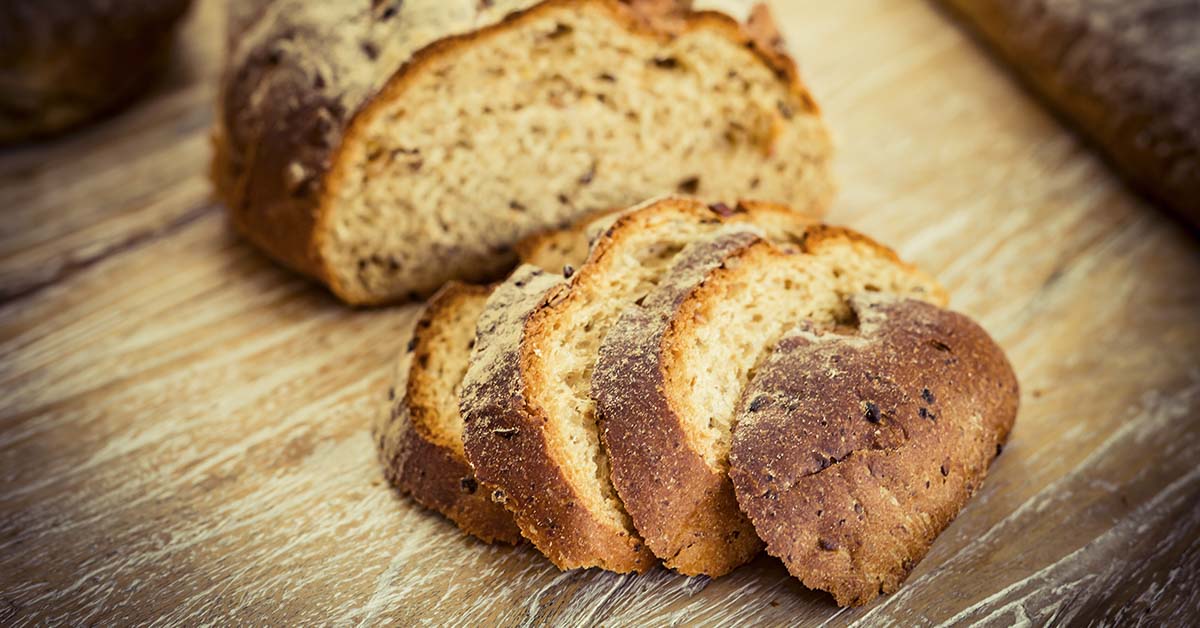With health and weight-loss gurus pushing low-carb diets, bread has fallen out of fashion. Like many high-carb foods, many people deem them unhealthy. But don’t throw out all bread with the highly-processed and bleached-wheat variety. Whole grains are full of important nutrients, like fiber and B vitamins, and they are a healthy energy source for the body. Ezekiel bread, for instance, is nothing like white bread when it comes to nutritional value. In fact, it’s often praised for being flavorful and healthy, and a look at the ingredients easily explains why. [1]
What Makes This Bread So Special?
Ezekiel bread is made from sprouted organic whole grains and legumes. It also contained no added sugar, unlike most types of bread made of refined wheat or pulverized whole wheat. Meanwhile, Ezekiel bread has four types of cereal grains — wheat, barley, spelt, and millet — and two types of legumes — lentils and soybeans. These grains and legumes all sprout before they are turned into bread.
The sprouting state is when a plant is in the process of turning from a seed into an actualized plant. In order to sprout, the seed needs to have enough hydration and an ideal environment. This sprouting process can significantly reduce the antinutrients found in grains, legumes, and other plants.
Antinutrients are chemicals plants naturally create to discourage animals from consuming them. In humans, antinutrients can inhibit digestive enzymes and prevent nutrients from becoming properly absorbed. But keep in mind, antinutrients don’t usually cause negative effects in most people, but they can play a part in vitamin and mineral deficiencies in people whose diets rely on grains or legumes. However, antinutrients aren’t inherently unhealthy. For instance, phytic acid is an antinutrient and a strong antioxidant with positive health benefits. [2]
Fortunately, sprouting can reduce the number of antinutrients in grains and legumes, enhancing their nutritional benefits. For example, it can increase the lysine content in these foods. Lysine is an amino acid that comes in small amounts in plants, but it’s an important substance that helps important functions in the body, including metabolism and sleep. But Ezekiel bread’s reduction in antinutrients means the vitamins and minerals in the bread are more easily absorbed and digested by the body.
Furthermore, sprouting increases the protein, fiber, vitamin C, and folate content in wheat. Sprouting also reduces the amount of gluten, a protein found naturally in wheat, barley, rye, and spelt. However, this does not make Ezekiel bread safe for people with celiac disease, wheat allergies, and gluten intolerances. Additionally, despite the bread’s nutritional value, it may not be ideal for those with diabetes or those who have to restrict their carbohydrate intake due to other medical reasons. [3]
But for everyone else, Ezekiel bread can provide more benefits than typical bread found in bakeries and grocery stores. You can find Ezekiel bread in many health food stores, supermarkets, and on the company’s website. You can also bake your own version at home. These recipes are not completely identical to the original recipe, but they replicate it fairly well, assuming they incorporate the important sprouting process, like this one:
Homemade Ezekiel Bread Recipe
Recipe by Andreea Fegan from Little Bites of Joy
Ingredients:
- 2.5 cups hard wheat berries
- 1.5 cups spelt berries
- 1/2 cup hulled barley
- 1/4 cup millet
- 1/4 cup dry green lentils
- 6 tbsp pinto beans (or a mixture of pinto, kidney, cannellini)
- 4 cups water, about 100 degrees
- 1/2 cup honey
- 1/2 cup grapeseed oil (or coconut oil)
- 2 tsp salt
- 2 pouches active dry yeast
Directions:
- Sprout the wheat, spelt, millet, lentils, and beans (hulled barley doesn’t sprout) by soaking each of them separately in bowls of water for about 8 hours.
- Then rinse and drain each ingredient.
- For the next 4 days, keep them in sprouters or mesh colanders.
- Continue to rinse and drain daily. After 3-4 days, you should see them sprouting.
- When a grain or legume sprouts, rinse and drain them before placing them on a lined dehydrator sheet.
- Then dehydrate them at 112 degrees Fahrenheit overnight or until they have completely dried.
- Set aside and dehydrate the rest of the sprouts.
- When all of the grains and legumes are dried, measure them again to ensure they fit the measurements above.
- Sprouted grains often grow in size, so it’s likely you’ll have some extra.
- Save them for another loaf or add them to a soup, chili, oatmeal, or baked goods.
- Next, make the batter for the Ezekiel bread.
- Grind the sprouted ingredients plus the barley in a grain mill or in a blender with the grain grinder attachment until they create a fine powder.
- In a large bowl, mix the water, honey, oil, salt, and yeast.
- Add the powders and knead the dough, either by hand with a spoon or in a stand-up mixer.
- Keep in mind, this will create a wet batter instead of a traditional bread dough.
- Pour the batter into 2 greased loaf pans.
- Cover the pans with a towel and let the dough rise until it grows close to the top of the pan.
- Bake at 350 degrees Fahrenheit for 30-50 (larger loaf pans need more time) until a toothpick inserted comes out clean.
- Remove the bread from the pans and place them onto a rack. Let them cool completely before slicing. For more details and tips, see the original recipe here.
Keep Reading: 13 Foods The Longest Living People In The World Eat Everyday
Sources
- “Ezekiel Bread: What Is It and Is It Healthy?” Eating Well. Ally Sorrells. October 19, 2022
- “Why Ezekiel Bread Is the Healthiest Bread You Can Eat.” Healthline. Kris Gunnars, BSc. February 13, 2023
- “Ezekiel Bread: Is it Good for You?” WebMD. Mohammed Juber, MD. September 12, 2022

